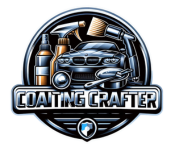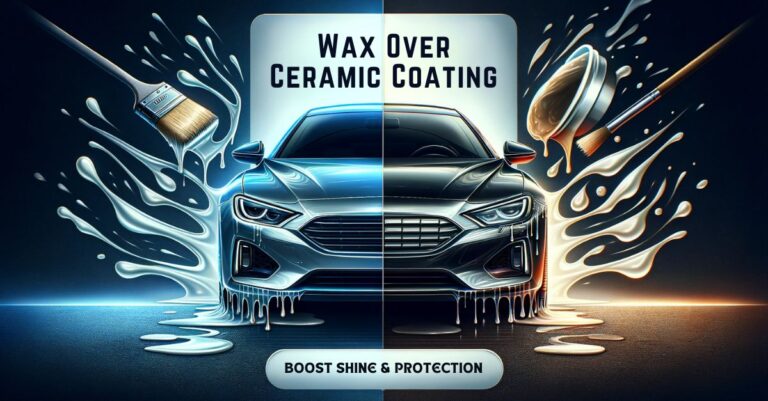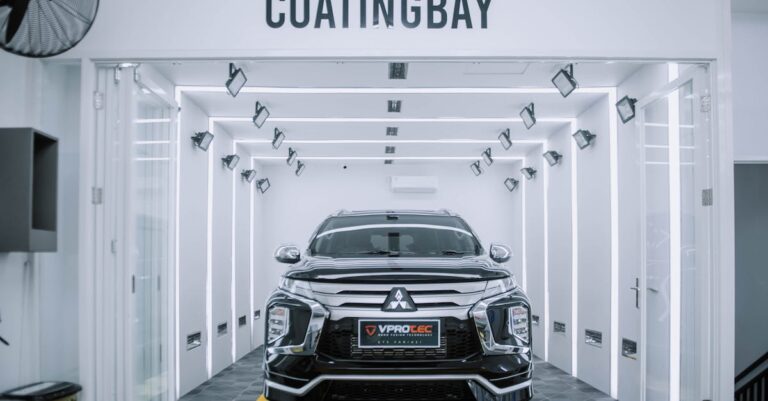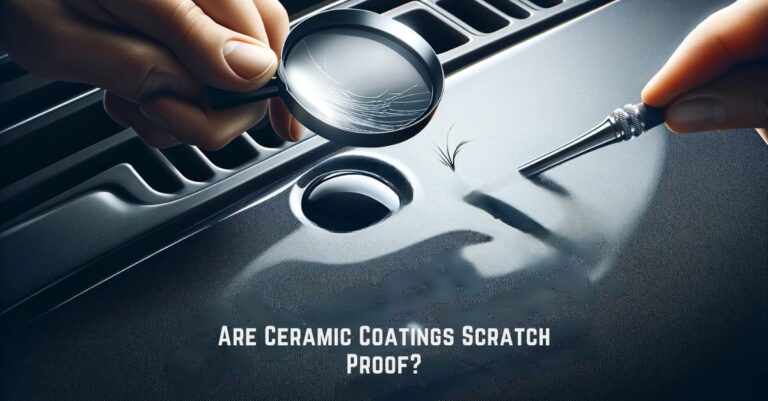Is Ceramic Coating Right for Your Car? Key Considerations
We’ve all seen those cars that gleam as if they’ve just rolled off the showroom floor. Ever wonder how they maintain that perpetual shine? It’s likely thanks to ceramic coating, a protective layer that’s been gaining popularity among car enthusiasts.
But is ceramic coating the right choice for your vehicle? We’re diving into the nitty-gritty of what it is, the benefits it offers, and the considerations you should weigh before making a decision.
Stay tuned as we explore whether ceramic coating can give your car that long-lasting luster, or if it might be an investment that’s not quite right for you.
What Is Ceramic Coating?
Ceramic coating represents a significant leap in vehicle surface protection. Beyond the scope of traditional waxing and sealing practices, nano-coating technology bonds with your car’s paint at a molecular level. This formidable bond creates a semi-permanent layer that doesn’t need frequent reapplication, saving both time and effort.
What sets this product apart is its composition. Made from silica and other chemicals, the coating works to repel water and contaminants much more effectively than traditional methods. We’re talking about a shield that fights against oxidation, UV rays, and even some light scratches. It essentially offers hydrophobic properties, which means it’s excellent at repelling water, mud, and grime that typically stain and damage a car’s exterior.
- Durability: Unlike wax, ceramic coating can last several years.
- Protection: It fends off corrosion, oxidation, and UV damage.
- Aesthetic: It enhances the paint’s glossiness, giving your car a stunning shine.
Installing the ceramic coating isn’t a job for the faint-hearted or untrained, though. It requires a clean and contaminant-free surface to bond properly. Most professionals recommend a detailed polishing and paint correction before the application to ensure the best results.
While it may seem complex, we mustn’t shy away from the fact that it requires proper maintenance. Even if the ceramic coating handles the brunt of environmental aggression, regular cleaning is still necessary to maintain the integrity and aesthetic appeal of the coating. And it’s crucial to note that even with this advanced protection, coated cars still can suffer from scratches and dings — it’s not a bulletproof solution.
The upfront cost might set some budgets back, but by offering long-term benefits and decreased maintenance needs, ceramic coating could prove its value manifold over time. As car enthusiasts, we’re always on the hunt for technologies that not only preserve our vehicle’s appearance but also enhance its overall value and longevity. Ceramic coating might just be the answer we’re looking for.
Benefits of Ceramic Coating
When we consider the benefits of ceramic coating for cars, the long-term value is hard to overlook. Durability stands out as one of the main advantages; a quality ceramic coat can protect a vehicle’s exterior for anywhere between two to five years, depending on the product and application process. This shield-like layer bonds with the paint at a molecular level, which means you won’t need to reapply it as frequently as traditional wax.
Here’s a rundown of key benefits that ceramic coatings offer:
- Enhanced Protection: With a ceramic coating, your car’s paint gains a robust armor against a range of environmental threats. Bird droppings, tree sap, and acidic contaminants can all cause damage over time. This protective layer ensures that these hazards do not make direct contact with the paint.
- Ease of Cleaning: Thanks to its hydrophobic properties, maintaining a spotless finish becomes far easier. Mud and grime slide off with minimal effort, which means fewer trips to the car wash and less scrubbing for us.
- UV Ray Resistance: Constant exposure to the sun can lead your car’s paint to oxidize and fade. Ceramic coatings have UV-resistant qualities that help preserve the color and shine of the vehicle.
In addition to these practical aspects, the visual appeal of a ceramic coating is undeniably attractive. The treatment amplifies the gloss, providing a level of shine that’s head-turning. This doesn’t just boost the aesthetic appeal of a vehicle – it can also enhance its resale value. When the paint job looks pristine, it’s a testament to a well-maintained car, which is always a selling point.
While we’re exploring whether ceramic coating is the right choice, it’s crucial to weigh these benefits against other factors, including costs and ongoing maintenance commitments. Remember, the outlay may seem steep, but when balanced with the reduced need for paint correction and the extended longevity of your car’s exterior, the investment begins to make sense.
Factors to Consider Before Applying Ceramic Coating
When contemplating whether ceramic coating is the right choice for your vehicle, there are several factors we should take into account. It’s not just about the shine and protection; it’s about understanding your car’s needs and your personal preferences.
Vehicle Condition
Before applying a ceramic coating, assess the current condition of your vehicle. Cars with faded paint or significant imperfections may require paint correction before coating. This ensures that the ceramic coating performs optimally and doesn’t lock in defects.
Lifestyle and Usage
Consider how and where you use your vehicle. If your car is frequently exposed to harsh elements or you live in an area with a high level of environmental pollutants, ceramic coating can offer substantial protective benefits. Regular country drives might expose your car to more scratches and contaminants compared to urban commutes.
Longevity Expectations
Ceramic coatings offer long-term protection, but the durability varies based on the product and application method. Expect a professional-grade coating to last between two to five years, but also consider that over time, it may require maintenance or a fresh application to ensure the continued protection of your vehicle.
Maintenance Commitment
While ceramic coatings reduce cleaning time, they are not maintenance-free. To keep the coating effective, regular washing and occasional top-ups with a booster product are recommended. Be ready to commit to this to make the most of your ceramic coating investment.
Cost Analysis
Lastly, let’s look at the costs. The initial expense of a professional ceramic coating is considerable. However, our analysis must go beyond the upfront cost. Weigh it against the potential savings on waxing, paint corrections, and the extended lifespan of the vehicle’s exterior.
By addressing these factors carefully, we can make an informed decision on whether ceramic coating aligns with our needs. It’s about striking a balance between the costs, the benefits, and our personal relationship with our car’s appearance and maintenance.
Does Ceramic Coating Work on All Types of Vehicles?
When it comes to protecting the exterior of a car, ceramic coating has become a popular choice for many vehicle owners. But a common question we find ourselves asking is whether ceramic coating is a one-size-fits-all solution for every vehicle out there. To address this, we need to dive into the specifics of how ceramic coating adheres to different vehicle surfaces.
Ceramic coatings are known for their versatility and can be applied to a wide range of vehicle types. From sedans and coupes to SUVs and trucks, the coating provides a layer of protection regardless of the vehicle’s size or style. However, the material of the exterior is a crucial factor. Surfaces such as metal, paint, and plastic can be coated effectively, ensuring long-lasting protection. For owners of classic cars with original paintwork or vehicles with matte finishes, it’s particularly important to use a product specifically designed for those surfaces to prevent unwanted gloss or damage.
The effectiveness of the ceramic coating also significantly depends on the condition of the vehicle prior to application. Vehicles with a newer paint job or well-maintained exteriors will see the most benefit from ceramic coatings. If there are any pre-existing issues such as scratches or oxidation, it’s critical to address these problems before applying the coating. In contrast, older vehicles with more significant wear and tear may not achieve the same level of aesthetic enhancement or protection.
For specialized vehicles, like those with vinyl wraps or custom paint jobs, it’s essential to consult with professionals to ensure compatibility. Incorrect application or product choice can result in damage to these unique finishes. Therefore, always verify that the product is compatible and that the individual applying the coating has experience with your specific vehicle type.
While ceramic coatings can be applied to virtually any vehicle, the effectiveness and suitability can vary greatly. It’s not just about whether the coating will work, but also about how well it will work for your particular vehicle. Factors such as the vehicle’s exterior materials, condition, and any special features must be carefully considered to ensure the best results.
Conclusion
We’ve explored the nuances of ceramic coating and it’s clear that the decision to coat your car depends heavily on the specifics of your vehicle. Whether you drive a sleek sedan or a rugged truck, the material and condition of your exterior will guide you towards making the best choice. For those with classic cars or unique finishes, professional advice is key to ensuring compatibility and maximizing the benefits. Remember, a ceramic coating can offer impressive protection and shine, but only if it’s the right fit for your ride. So weigh your options carefully and choose what’s best for your automotive investment.







